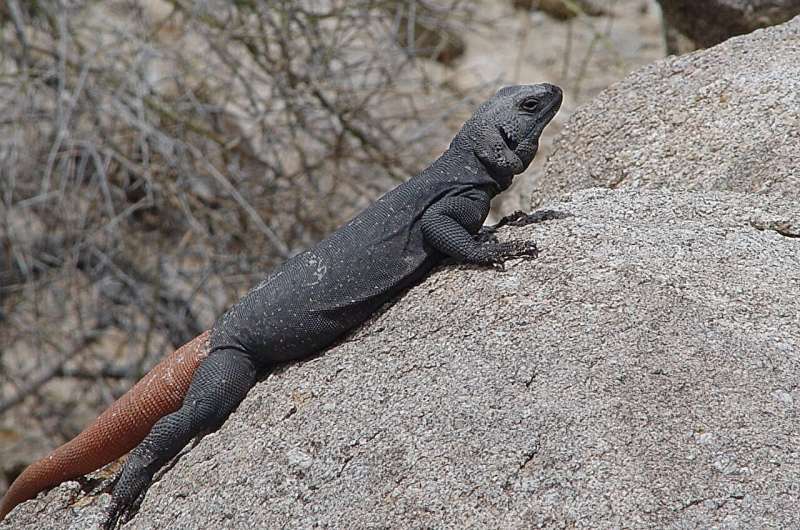This article has been reviewed according to Science X's editorial process and policies. Editors have highlighted the following attributes while ensuring the content's credibility:
fact-checked
peer-reviewed publication
trusted source
proofread
Animals with higher body temperatures are more likely to evolve into herbivores, study finds

A University of Arizona study has uncovered a surprising relationship between an animal's body temperature and its likelihood of evolving into an herbivore. The study, published in the journal Global Ecology and Biogeography, offers fresh insights into the evolution of plant-based diets across tetrapods, which include the land vertebrates—amphibians, birds, reptiles and mammals. The findings could reshape scientists' understanding of the evolution of animal diets.
The study, which analyzed data from 1,712 species, found a consistent pattern: Animals with higher body temperatures are more likely to evolve into herbivores. This relationship holds true across the major land vertebrate groups.
The relationship between body temperature and herbivory is linked to the unique digestive challenges posed by a plant-based diet, said senior study author John Wiens, a professor of ecology and evolutionary biology at the U of A.
Higher body temperatures may be necessary to support the gut bacteria that break down cellulose, the primary component of plant cell walls. The relationship between an animal's body temperature and its gut microbiome could be key to understanding why certain species are better equipped to adopt and maintain herbivorous diets, Wiens said.
"We were specifically interested in body temperature, because it is one of the most widespread and comparable factors that might determine diet across different groups of animals," said Kristen Saban, the study's lead author. Saban was a U of A sophomore majoring in ecology and evolutionary biology when she began the study.
The research team conducted extensive analyses, examining various other factors that might influence the evolution of diet, including body size and day or night activity patterns. Body temperature ultimately emerged as the most crucial factor in predicting the evolution of an herbivorous diet.
"What we found was that body temperature is somewhat of a requirement to evolve an herbivorous diet. We really didn't see any herbivores that don't have a high body temperature. Typically, the body temperature was more than 86 degrees Fahrenheit," Saban said.
Some previous studies have looked at how an herbivorous diet may have influenced the evolution of body temperature in animals, Saban said. This study looked at it the other way around, attempting to find what factors drove the evolution of herbivory.
The researchers compiled relevant data from dozens of previous studies and conducted their analyses. The study also sheds light on the evolutionary timeline of herbivory. Contrary to what might be expected given the prevalence of plant-eating animals today, herbivory appears to be a relatively recent diet, Wiens said. Tetrapods are ancestrally carnivorous. Lizards, for example, have had meat as a significant part of their diet, while iguanas have evolved to be herbivores. Herbivorous groups that exist now are all less than 110 million years old, he said, even though tetrapods are 350 million years old.
The timing coincides with the spread of flowering plants—angiosperms—which became dominant around 110 million years ago and now constitute about 90% of all plant species. Overall, the findings open new avenues for future research, especially considering that older herbivorous lineages, such as herbivorous dinosaurs, haven't persisted to the modern day, Wiens said.
The study also revealed that herbivory is an unstable trait in evolutionary terms. The researchers observed numerous instances of species reverting from herbivory back to carnivory. Wiens said the singing mice from Latin America, for example, evolved from their herbivorous ancestors to feed mostly on insects. These reversals were just as common as the origins of herbivory. The reason this instability occurs remains unknown, Saban said.
"Once it evolves, it doesn't necessarily stick around very long," Wiens said. "It's possible that some of the groups that are herbivores today will evolve species that feed on animals again."
More information: Kristen E. Saban et al, Diet Evolution and Body Temperature in Tetrapods: Cool Old Carnivores and Hot Young Herbivores, Global Ecology and Biogeography (2024). DOI: 10.1111/geb.13900
Journal information: Global Ecology and Biogeography
Provided by University of Arizona




















